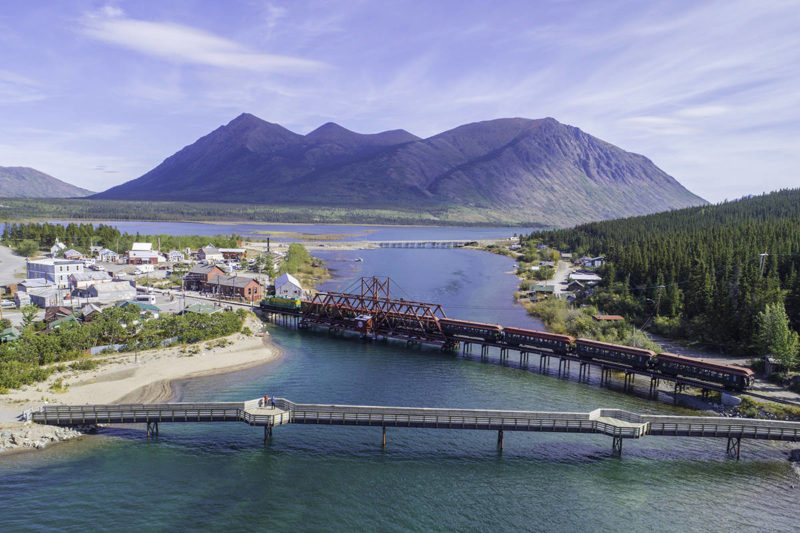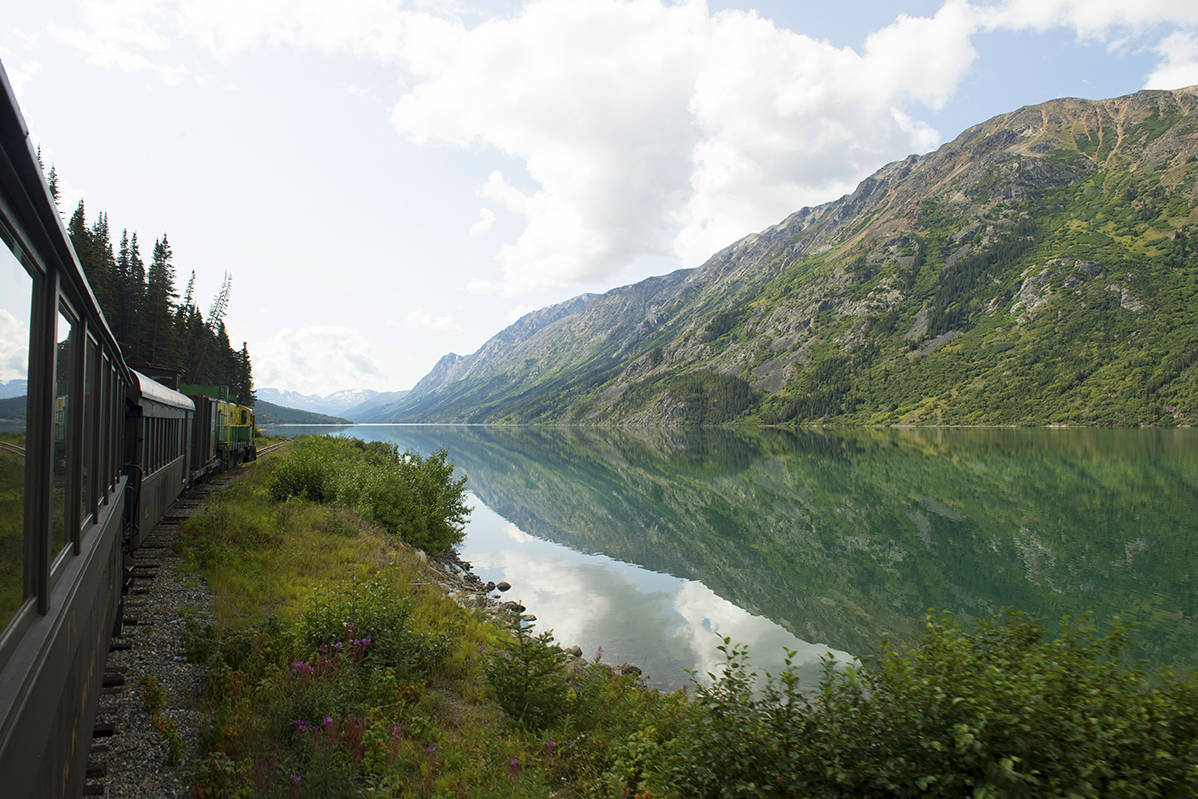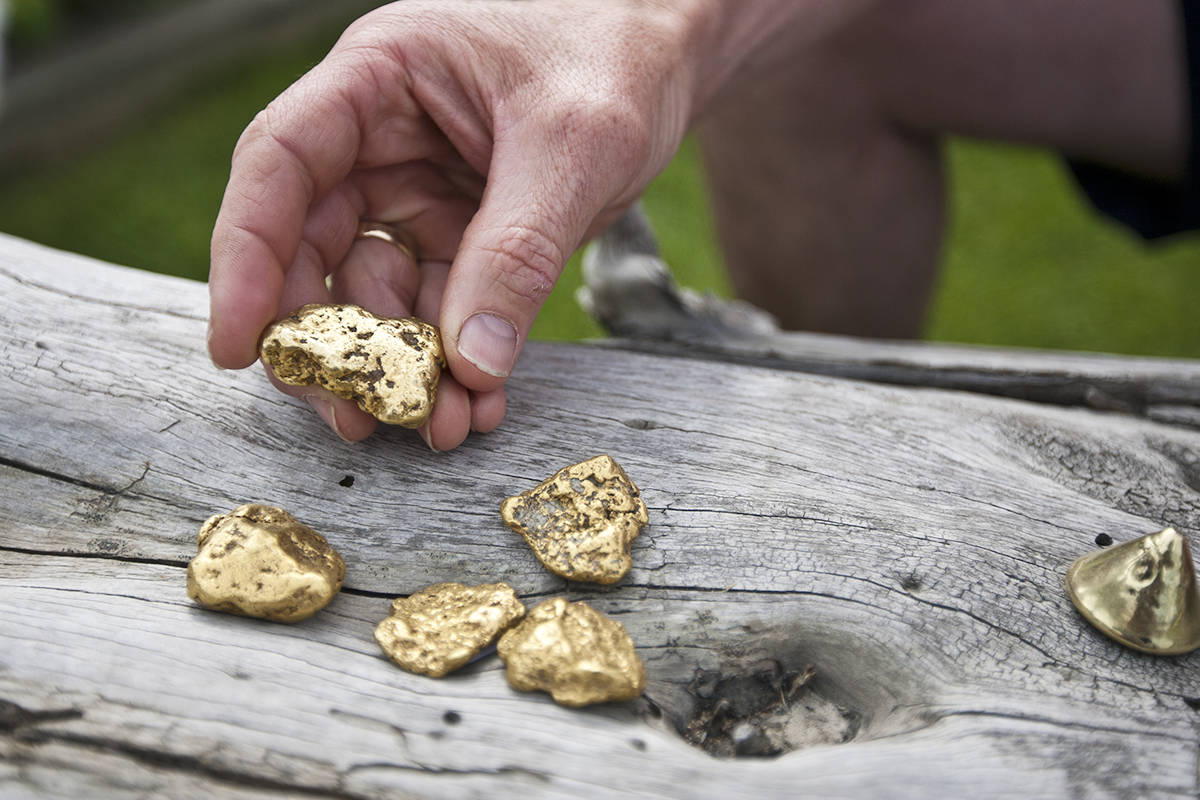What do the Eiffel Tower, the Panama Canal and the Statue of Liberty all have in common with White Pass and Yukon Route Railway?
They all share the title of International Historic Civil Engineering Landmarks and are a must-see destination for many.
If you’re ready to learn more about the popular Canadian tourist attraction that shares this elite company, step back in time to relive a little of The Klondike Gold Rush.
In the late 1800s, the gold rush saw crowds thousands strong taking to the northern wilderness in search of spoils – after all, who doesn’t want to upgrade from rags to riches?
While gold was discovered deposited along the Klondike River in 1896, the remote location and harsh winter climate meant it wasn’t until the following year that the outside world was able to reach it. Reports of gold created a nation-wide frenzy, with many quitting their jobs and heading to Klondike to start their prospecting career.
Reaching the Klondike then was no easy feat. Treacherous terrain led prospectors through long mountainous climbs, along frozen rivers and through blistering snowstorms. In fact, Canadian authorities directed gold diggers to bring enough food to last them a year so that they wouldn’t starve on their journey.
By the summer of 1898, gold rushers were pouring in to the region by the thousands, yet only about one-third actually made it to the Klondike. Others gave up along the way or didn’t survive the harsh weather. Mining presented another challenge, due to both the unpredictable distribution of gold and the permafrost that slow digging.
Only 4,000 of the 30,000 prospectors actually found gold, though many boomtowns appeared along the Klondike river, supported by successful miners’ spoils and others’ dreams.
With the 1899 discovery of easier-to-access gold in Nome, Alaska, many miners departed the area as quickly as they came, bringing a sharp decline in the populations of many surrounding towns.
READ MORE: Yukon-made podcast breathes new life into old gold rush tales
Today, you can retrace much of the prospectors’ journeys along the White Pass and Yukon Route Railway.
Some 120 years after the first very first trip on this engineering marvel, climb aboard and sense the hopes and dreams of those who risked it all in the chase for riches.
From downtown Whitehorse, a bus takes travellers to Fraser, BC, where you’ll board the vintage passenger coaches. Soak in the sights of mountains and glaciers from the comfort of your seat, while learning about the history of this epic railway.
The 45-kilometre excursion descends over the White Pass Summit into Skagway, Alaska.
“Travelling slowly through its hair-pin turns, steep slopes and narrow bridges, you’re given a sense of the harrowing reality the prospectors endured for the promise of treasure. The hazards of the unforgiving Klondike Trail of ’98 are worn into the rocks, paying eternal homage to the thousands of souls who perished in their futile search for gold,” notes Travel Yukon.
READ MORE: Walkway, signs planned for West Dawson paddlewheel graveyard
In Skagway, you’ll have a little time for shopping, lunch or exploring the historic town, before boarding your motor coach back to Whitehorse along the South Klondike Highway.
Back in Whitehorse, be sure to stop in to the MacBride Museum for a fascinating look into the Yukon’s gold rush era, in addition to exhibits exploring Yukon First Nations, the natural world and more. There’s even an authentic nugget once owned by Klondike legend, Skookum Jim.
To learn more and discover other White Pass Excursions, visit them online!













 Year-long logging halt aims to bolster northern spotted owl habitat near Hope
Year-long logging halt aims to bolster northern spotted owl habitat near Hope